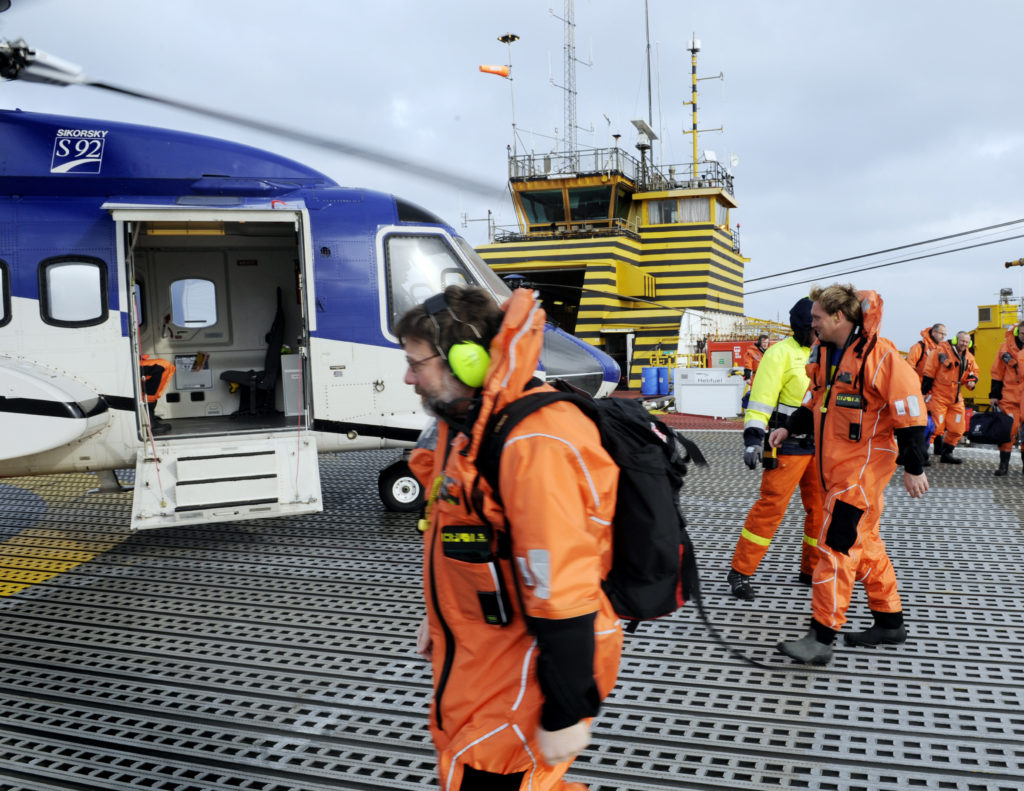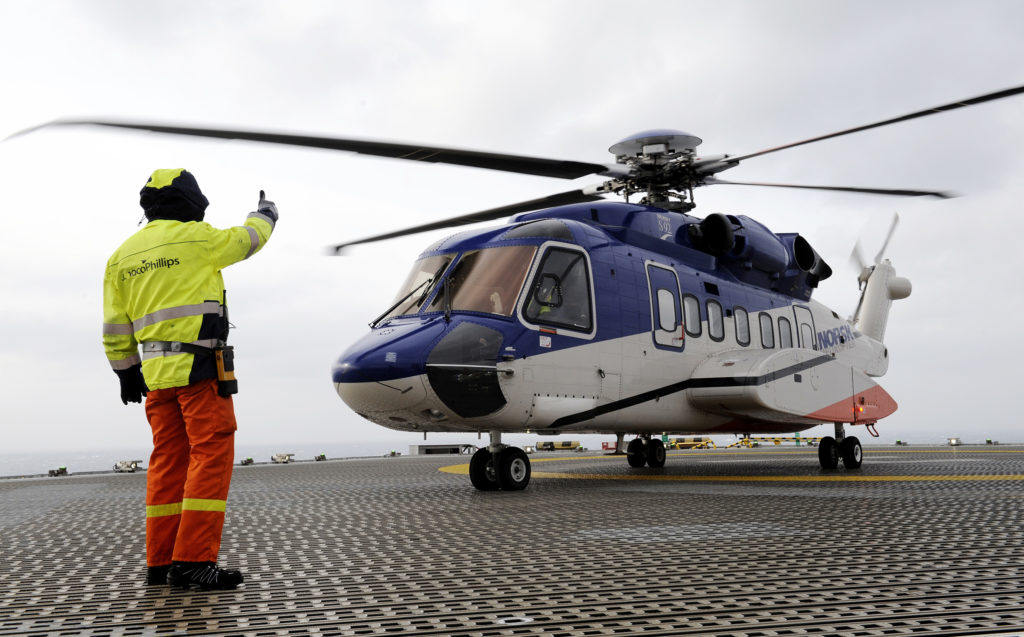Safe to fly

“Landed on one engine”, “Alarms sounded” and similar reports were not unusual – and did nothing to allay the concerns of offshore workers, their families and others.
These difficulties proved to relate to the Sikorsky S-92-A – a new type of helicopter which had been phased in for Norwegian personnel transport in 2005. All the episodes ended well.
A Sikorsky machine with 17 people on board landed on just one engine at Stavanger Airport Sola in October 2006. The other engine had broken down over the sea en route from Ekofisk with workers whose tour had ended.[REMOVE]Fotnote: NTB, “Helikopter landet med én motor”, 16 October 2006.Norsk Helikopter, which owned the machine, sought to provide reassurance by explaining that it was designed to stay in the air on just one engine. Comments from the passengers indicated that calm had prevailed on board. They had noticed little apart from a slight change in the noise.
 det er sikkert å fly, 2006, historie,
det er sikkert å fly, 2006, historie,Only two weeks later, another helicopter flying from Sola to Ekofisk had to turn back. Alarms in the cockpit indicated fire in an engine. The pilots assessed the position as serious, and chose to make for the nearest airfield on land. Wind direction dictated the choice of Lista air station at Norway’s southern tip.
Another Sikorsky S-92, this machine was carrying 19 passengers and two pilots. It had almost reached Ekofisk when the alerts sounded.
The joint rescue coordination centre (JRCC) was notified and another helicopter escorted the damaged aircraft safety to Lista.[REMOVE]Fotnote: Våge, F E, “Helikopter nødlandet på Lista”, Stavanger Aftenblad, 2 November 2006.Technical investigations revealed that there had actually been no fire in the engine, but that the fire alarm system had malfunctioned.
Over the next two weeks, several more Sikorsky S-92s had to abort their flights. These incidents did not affect Ekofisk workers, but fields further north. A helicopter en route from the Scarabeo 5 and Transocean Searcher drilling rigs to Kristiansund received indications of metal shavings in the gearbox. Once again, it transpired that the damage was not serious – the shavings or metal fibres had accumulated while manufacturing the recently installed equipment.[REMOVE]Fotnote: Tidens Krav, “Helikopter nødlandet”, 14 November 2006.Tidens Krav, “Helikopter nødlandet”, 14 November 2006.
Another helicopter had to abort a flight to Gullfaks A and make a controlled landing at Bergen Airport Flesland after a fire alarm sounded in the cockpit. A mere six minutes after it was on the ground, reports came in of another Sikorsky with problems – in this case, reduced engine capacity.[REMOVE]Fotnote: Pedersen, K, Rugland, I and Stegane, E, “Lampefeil ga full alarm”, Bergens Tidende, 10 November 2006. And a third machine made an emergency landing at Sola after one of the main engines broke down.
 det er sikkert å fly, 2006, historie,
det er sikkert å fly, 2006, historie,All these incidents and the subsequent media headlines increased disquiet among oil workers who were dependent on helicopters to get to and from work.
The common denominator was the S-92-A. This had been introduced in Norway during 2005, and quickly became the most widely used helicopter for offshore personnel transport.
That provides the key to all the reports. The helicopter type suffered a good deal of teething trouble, including problems with de-icing the rotor blades and engine fire alarms.[REMOVE]Fotnote: Helicopter safety study 3: (HSS-3): main report, Trondheim: Sintef Teknologi og Samfunn, Sikkerhet, 2010.
Several Pan-Pan and Mayday calls unleashed by false alarms were made from cockpits during the first two years after the S-92 was introduced. When the Airbus H225LP (previously the Eurocopter EC225) was phased in during 2008, the Norwegian civil aviation authorities recorded the same problems with false alerts.
Despite all the alarms and “emergency landings” at this time, the S-92-A was considered to be safe and comfortable compared with other helicopter types. It attracted a relatively high level of trust from both passengers and pilots.
But incidents and not least media reports affect safety perceptions. A number of passengers became more vigilant or insecure, while family and friends on land grew concerned.
As with other types of incidents, passengers and people on the ground needed information. And where such details are inadequate or lacking, the imagination can quickly run wild. The media were an important source of information.
A report from the Sintef research foundation found that offshore helicopter traffic was relatively secure. Owners, oil operators and the government had invested heavily in safety.[REMOVE]Fotnote: Helicopter safety study 3: (HSS-3): main report, Trondheim: Sintef Teknologi og Samfunn, Sikkerhet, 2010.
One helicopter accident with no fatalities was registered on the Norwegian continental shelf in 1999-2010. There had been no serious incidents with offshore flights since the Norne crash in 1997. Sintef concluded that the risk of flying offshore by helicopter had been reduced thanks to new machines, new technology, greater pilot competence and tougher demands from the clients – in other words, the companies – and the government.
Platform removal on Edda in 2006Removing light structures in 2007